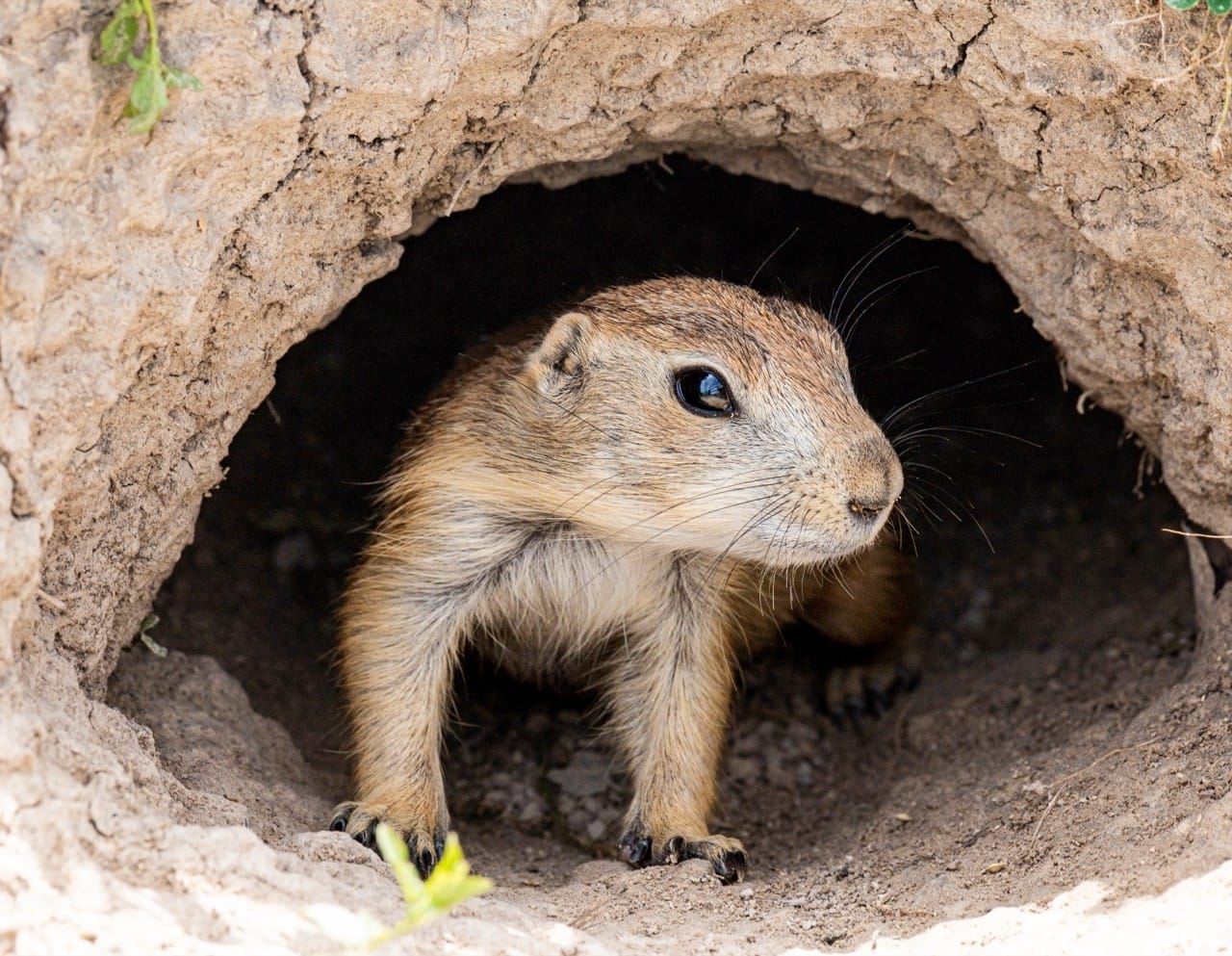Imagine walking through the vast, sprawling grasslands of North America and suddenly hearing a series of high-pitched calls. You look around and see a small, round-faced creature with bright, watchful eyes. This is the prairie dog, not actually a dog, but a rodent that plays a crucial role in maintaining the ecological balance of its habitat. These small, burrowing animals are as fascinating as they are vital, and their social behaviors and complex communication systems make them unique subjects of study in the animal kingdom.
Characteristics / Physical Description
Prairie dogs are members of the squirrel family and are closely related to ground squirrels, chipmunks, and marmots. They typically measure between 30 to 40 centimeters in length and weigh between 1 to 1.5 kilograms. Their coats are mostly tan or brown, which helps them blend into the arid surroundings of their natural habitat. One of their most distinctive features is their black-tipped tails. Prairie dogs have strong, sharp claws that are ideal for digging extensive burrow systems.
Taxonomy and Classification
Scientifically classified under the genus Cynomys, prairie dogs belong to the rodent family Sciuridae. There are five species of prairie dogs, and these include the black-tailed, white-tailed, Gunnison’s, Utah, and Mexican prairie dogs. The black-tailed prairie dog is the most common and widespread among these.
Behavior and Social Structure
Prairie dogs are highly social creatures and live in large colonies or “towns,” which can span hundreds of acres. These towns are subdivided into wards, which are then split into coteries, typically consisting of one male, several females, and their young. They use a complex system of vocalizations to communicate with each other, particularly when alerting the colony to the presence of predators. Their social interactions are vital not only for survival but for maintaining the structure of their communities.
Habitat and Distribution
Prairie dogs are found in the grasslands of North America, from Canada to Mexico. They prefer areas where the ground is soft enough for burrowing but can also be found in rocky areas. Their presence is essential to their ecosystem, as their burrowing activities aerate the soil, allowing more water penetration and the growth of different plant species.
Diet and Feeding Habits
Primarily herbivores, prairie dogs feed on grasses, herbs, and small plants. They have a significant impact on their local environment because their grazing habits influence the type of vegetation that thrives around them. During the winter, they survive on stored food and fat reserves.
Breeding and Reproduction
Prairie dogs are generally monogamous, and breeding occurs once a year, typically in early spring. Females give birth to three to eight pups after a gestation period of about a month. Pups are born blind and hairless and are completely dependent on their mothers for the first few months of their lives.
Relationship with Humans
Historically, prairie dogs have been considered pests by farmers and ranchers because their burrowing can damage crops and grazing land. However, attitudes are changing as people begin to understand the crucial role these animals play in the ecosystem. Conservation efforts are now focusing on preserving their habitats and populations.
Evolutionary History
Prairie dogs have adapted remarkably to the grasslands of North America. Their burrowing habits have evolved not only as a defense mechanism against predators but also as a way to cope with the harsh weather conditions, particularly the intense heat and cold of the plains.
Use as Research Animals
In scientific research, prairie dogs have been used in studies focusing on social behavior and disease transmission, particularly in relation to their susceptibility to bubonic plague, which has significantly affected their populations.
Prairie dogs continue to fascinate and challenge our understanding of ecological relationships and animal societies. As we learn more about these remarkable creatures, we gain insights into the complexity of nature and the importance of every species in maintaining the balance of our planet.

